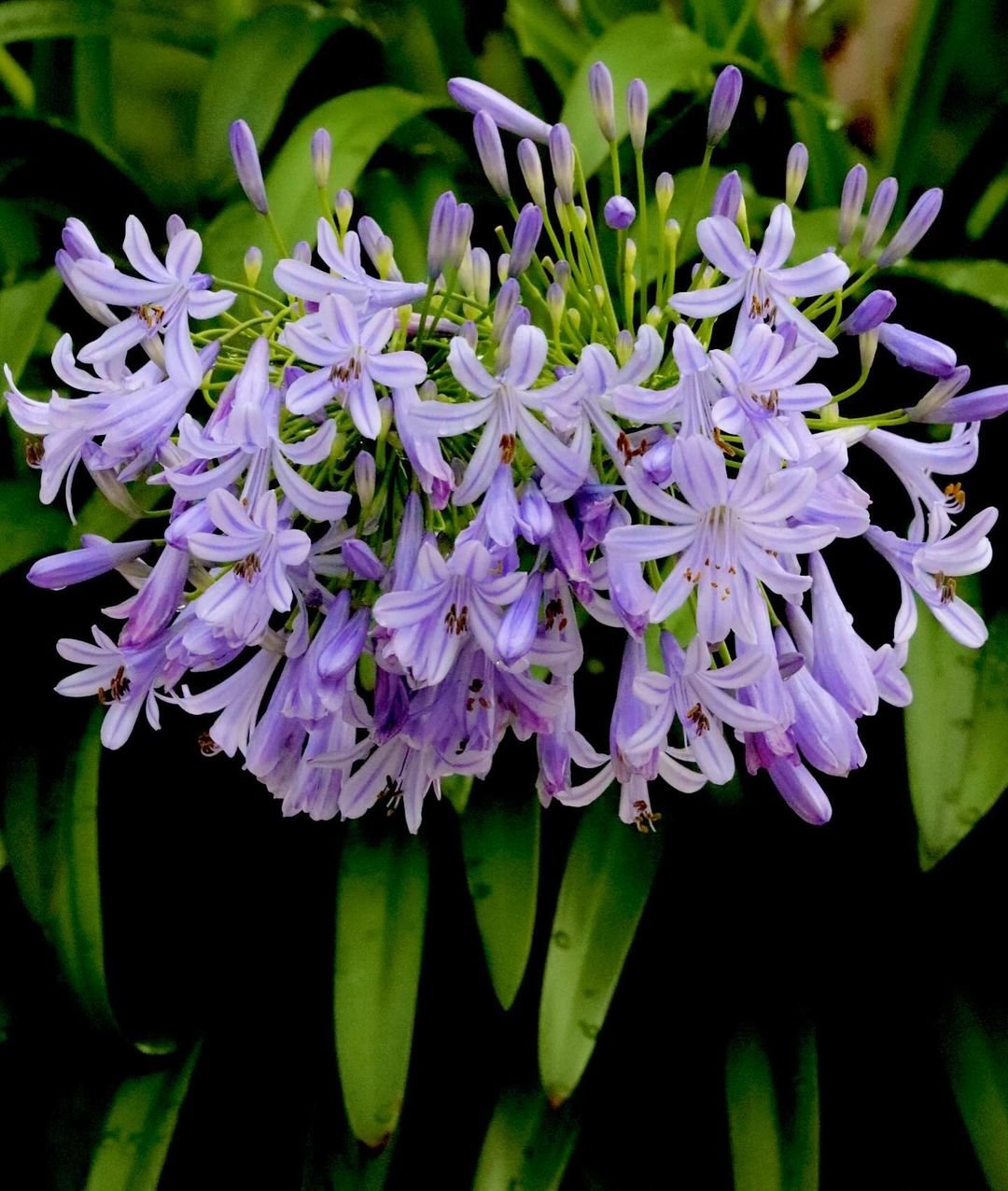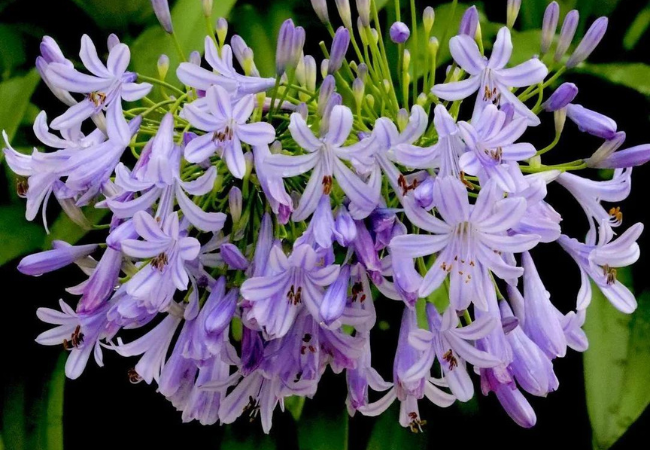Discover how to grow and care for Agapanthus stunning blue flowers. Learn about different varieties, uses in gardens and helpful tips for both new and experienced gardeners. Perfect for adding a touch of African beauty to your landscape.
Have you ever seen a flower that looks like a bunch of tiny trumpets on a tall stem? That might be an Agapanthus, also called African Lily! These flowers are not only beautiful but also pretty tough. Let’s dive into the world of Agapanthus and see why so many gardeners love them.
Here’s a comprehensive and easy-to-understand chart for Agapanthus:
| Attribute | Details |
|---|---|
| Botanical Name | Agapanthus africanus |
| Common Name | African Lily, Lily of the Nile |
| Plant Zone | 8-11 |
| Sun Exposure | Full Sun to Partial Shade |
| Soil Type | Well-drained, fertile soil |
| Watering | Moderate, allow soil to dry out between waterings |
| Growth Habit | Clump-forming, upright |
| Height/Spread | 18-36 inches tall / 12-24 inches wide |
| Special Features | Attracts pollinators, drought-tolerant, excellent cut flowers |
What is Agapanthus (African Lily)?

Agapanthus, commonly known as African Lily or Lily of the Nile, is a group of flowering plants from South Africa. They’re not really lilies, but they got this name because of their lily-like leaves.
How Does Agapanthus Look?
- Color: Usually blue or white, sometimes purple
- Shape: Round clusters of small, trumpet-shaped flowers on tall stems
- Size: Plants can grow 2 to 4 feet tall
- Leaves: Long, strap-like and usually evergreen
Popular Types of Agapanthus
- Agapanthus africanus: The most common type
- Agapanthus ‘Headbourne Hybrids’: Hardy variety with blue flowers
- Agapanthus ‘Albus’: Pure white flowers
- Agapanthus ‘Navy Blue’: Deep blue flowers
Growing Agapanthus in Your Garden: Want to grow these elegant flowers? Here’s how:
- Choose a spot with full sun or partial shade.
- Make sure the soil drains well. Agapanthus doesn’t like wet feet!
- Plant in spring or early summer.
- Water regularly when young, but once established, they’re quite drought-tolerant.
- In colder areas, grow them in pots so you can move them indoors for winter.
Uses of Agapanthus
- In Flower Beds: Agapanthus makes a great focal point in garden beds.
- In Containers: They work well in large pots on patios or balconies.
- As Cut Flowers: The long-lasting blooms are perfect for flower arrangements.
- For Pollinators: Bees and butterflies love Agapanthus flowers!
Caring for Agapanthus
- Watering: Keep soil moist but not soggy. Water less in winter.
- Fertilizing: Feed with a balanced fertilizer in spring and mid-summer.
- Pruning: Remove dead leaves and flower stems after blooming.
- Winter care: In cold areas, protect with mulch or bring potted plants indoors.
Fun Facts
- The name Agapanthus comes from Greek words meaning “love flower.”
- In some cultures, Agapanthus is believed to bring good luck.
- These plants can live for many years and often get better with age.
Things to Watch Out For
- Agapanthus can take a few years to start blooming.
- Some people might get skin irritation from the sap.
- In some warm areas, Agapanthus can spread quickly and become invasive.
Agapanthus or African Lily, is a beautiful and relatively easy-to-grow plant that can add a touch of elegance to any garden. With their tall stems and blue or white flower clusters, they’re sure to catch everyone’s eye. Whether you have a big garden or just a small patio, there’s probably a perfect spot for these stunning flowers.
I hope this article helps you learn about Agapanthus flowers. Have you ever seen these elegant blooms in a garden? They’re definitely worth looking out for on your next garden visit!
For more gardening tips and plant care guides, visit usagardenhub.com.







One comment on “Agapanthus (African Lily) : Bringing Elegant Blue Blooms to Your Garden”